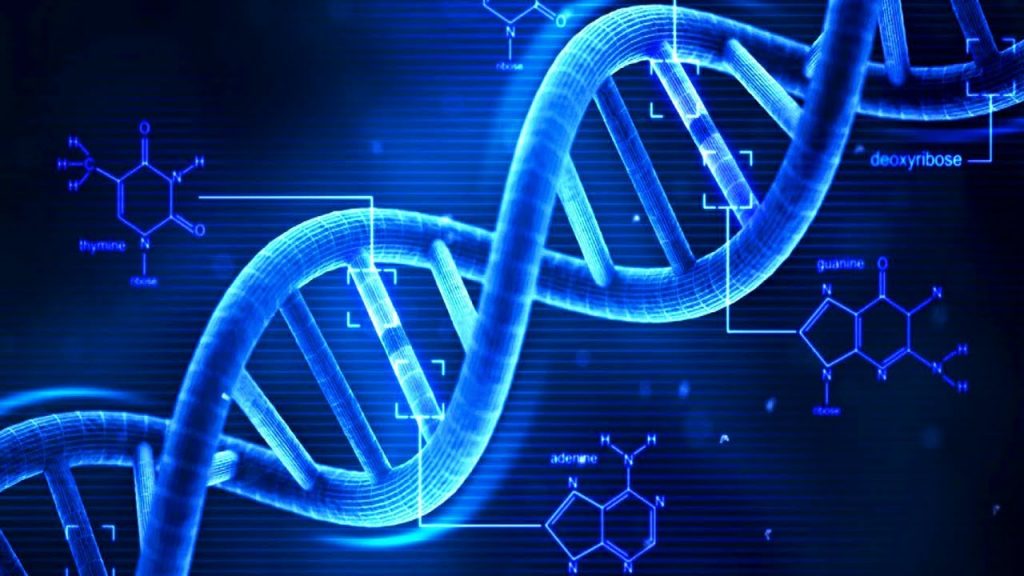Biological Self Repair affecting certain proteins in the cells, triggers mechanisms that enable them to synthesize enzymes for DNA repair in emergency situations (SOS response – SOS repair) in case of serious DNA damage that actually threatens its viability. Protein SOS-response is short-lived and, after about 40-60 minutes, it switches to constitutive repair.
The result of this is the suppression of defective replications and an increase in the accuracy of replication of existing sequences in DNA; this allows Biological Self Repair to be used to prevent the oncological process and suppress the progression of malignant cells during oncotherapy.

All these processes occur under the influence of a biopolymer – polyprenol. The molecular substances of polyprenol are involved in the “repair” of damaged DNA sites, and the ubiquitin polymer is a molecular “death mark” and includes a molecular mechanism for the destruction of “unnecessary” proteins. Ubiquitin protection of the cell from unwanted proteins is necessary if the normal functioning of the body is disturbed (Parkinson’s disease, Alzheimer’s and some oncological diseases, as well as to slow down the aging process).
biological Self Repair experimentally showed how these enzymes identify a damaged part of DNA, and then make two cuts in a chain, removing a piece of 12-13 nucleotides containing the damaged part. They recognize the presence of damaged nitrogenous bases of certain types in the DNA and remove them by cleaving the bond of this base with the sugar phosphate backbone of the DNA molecule. Then other enzymes come into play. DNA polymerase synthesizes the corresponding part of the DNA chain instead of the deleted one, and DNA ligase cross-links the chain. This type of DNA repair is called excision repair.
BSR minimizes errors in the genetic control system and restores biochemical processes in living cells at a level unattainable for other technologies – at the level of small molecules, their atomic groups and individual atoms.
As practice shows, BSR, through all kinds of signalling proteins in the body, corrects errors at a very low level. This effect makes it possible to bring cells having a disturbed phenotype (mutator phenotype) to a normal phenotype.
BSR affects the discovery of vesicular traffic, the process of producing proteins responsible for genetic recombination, repair and DNA replication. Increases proliferative activity (division activity) in cells and controls the cell cycle, triggers the accelerated apoptosis system of defective cells. This leads to a slowdown in the accumulation of mutations, to the release of cells from genetically excessive (extrachromosomal) DNA.

(A) The ubiquitin polymer is a molecular “death mark” and includes a molecular mechanism for the destruction of “unnecessary” proteins. Ubiquitin protection of the cell from unwanted proteins is necessary if the normal functioning of the body is disturbed (Parkinson’s disease, Alzheimer’s and some oncological diseases, as well as to slow down the aging process).
(B) The molecular substances of polyprenol are involved in the “repair” of damaged sections of DNA.
(C) The molecular substances of polyprenol are involved in the “repair” of damaged sections of DNA.
BSR increases proliferative activity (division activity) in aging cells. If we count the increase in the number of passages of aging fibroblasts treated with a concentrated (ampoule) form of BSR extract by the duration of human life, this figure translates to approximately 180-200 years of active life.
This effect is apparently caused by a large number of biologically active substances in the preparation, as well as one very important property of the BSR – the suppression of defective replications (the formation of cancer cells). Indeed, on the one hand, it is known that cell aging is mediated by many factors. One such factor is free radicals. These are highly active particles that destroy various components of the cell. The consequence of this high reactivity is DNA damage. BSR contains ubiquinones and other substances with reducing potential. Such substances are able to neutralize free radicals, which leads to a slowdown in the accumulation of mutations.
On the other hand, many factors indicate the effect of the BSR preparation, both exo – and endogenous in nature, provoke changes in the DNA structure, not only genetic, but also epigenetic.
Using the example of polymerase chain reaction (PCR) of a K-ras gene fragment using a three-primer scheme with substitution, it was proved that a concentrated solution of the BSR preparation markedly improved the characteristics of this reaction. And despite the fact that PCR is an in vitro model of DNA replication, we can talk about the positive effect of the components of the product on the accuracy of replication. Improving the accuracy of in vitro DNA replication (in the PCR amplification model system) allows BSR to be used to suppress the progression of malignant cells in cancer.
Another important property of the product BSR is its effect on vesicular traffic. The increased in vitro vesicular traffic (intracellular and intracellular transport in the membrane vesicles) indicates the presence of components stimulating this process in the extract, which in turn can enhance the output of neurotransmitters in synapses and serve as a means of increasing efficiency, and have antiviral and antitumor effects.
Indeed, in vitro experiments proved the cytotoxicity (destruction) of BSR against tumor cells in 24.7% in the absence of toxicity to normal cells.
